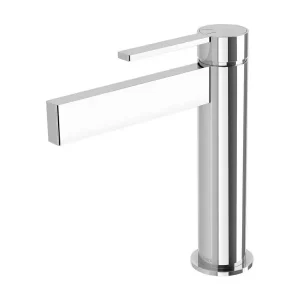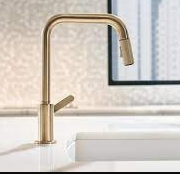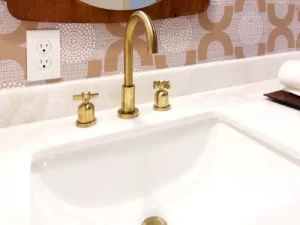If you are running a restaurant then it might be possible you find it way too difficult to wash the dishes because of low water flow. Most of the people running restaurants consist of a commercial kitchen as well. So, for this purpose, a pre-rinse faucet is best to use. They are designed for the commercial kitchen as they provide better flow and wash the dishes in a faster way. Due to the fast shower flow, you can easily wash multiple dishes in a few minutes.
The consideration you need to keep in mind while choosing the right pre-rinse Faucet:
Here are some of the facts that you need to keep in mind before choosing a Pre-rinse Faucet to let’s jump into it:
1. Spray Setting
Pre-rinse valves with numerous spray settings are the most effective. A minimum of two selections would suffice. Sprayers with three or four possibilities, on the other hand, are the best. Spraying stemware with the same force as a cast-iron frying pan is not a good idea.
2. Docking Method
When not in use, the docking mechanism is used to keep the faucet head attached. To maintain the valve in place, several companies use a magnetic system. This design is a great alternative to having the nozzle hang or using a hook system, both of which can cause the hose and spout to droop over time.
3. Flow Rate
There are a variety of flow rates available for kitchen faucets. The amount of water that flows through the faucet is measured. The average flow rate is 2 GPM; however, some are as low as 1.5 GPM.
What you desire is determined by how much liquid a particular kitchen utilizes daily. So, keep this figure in mind while you research other varieties.
4. Spout Height and Hose Length
You must consider spout height, hose length, and base cabinet space when installing a pre-rinse faucet. Higher spouts allow the sprayer to travel more freely in your dishwasher. Take into account the amount of accessible overhead space.
The length of the hose and the amount of space under the cabinet accessible to accommodate the hose and other fittings are the next considerations. Take measures to ensure you don’t end up with a hose that is too short or too long.
5. Price and Warranty
Finally, make sure the fixture is within your financial constraints. Commercial faucet fixtures can cost anywhere from $100 to $1,000.
The warranty is the next factor to consider. Your pre-rinse faucet may see a lot of use. Ensure that it will be sturdy enough for your needs and that your warranty will cover parts that break down prematurely if it wears out sooner than expected.
Cost to Install Pre-Rinse Faucet
Installing a kitchen faucet might cost anywhere from $260 to $480, assuming you don’t require any modifications such as new piping. Kitchen faucets are more expensive than bathtub faucets since they are larger and hence more expensive. They also take longer to install than bathtub faucets because they have more features.
How much does it cost to replace a Pre-Rinse faucet?
Replacing a pre-rinse faucet is similar to installing one, but it also requires the removal of an existing faucet. The only extra cost is the time it will take to remove the faucet, which should be under 30 minutes.
Costs of Installing a Kitchen Faucet by Type
Pre-rinse faucets come in a variety of styles, which might affect the cost of installation. A pre-rinse faucet normally costs $150 to $200, but a pull-out faucet typically costs $100 to $150. The most common bar faucets range in price from $50 to $100. A pot filler costs between $150 and $200 on average.
Why is Pre Rinse Faucet Expensive?
Pre-rinse faucets are expensive due to high-quality materials used such as solid brass. These materials are stainless and give a superior look and durability. Its touchless technology also makes it more expensive.
How to Install Pre-Rinse Faucet?
Before installing a pre-rinse faucet you need to look at kitchen water pipelines. If the pine line is under the counter then choose a deck mount faucet, and if lines go through the wall then pick wall mount. However, due to its large curved neck size, it is preferred to install on the wall. Let’s get into a step-step process of installation.
Step by Step Process
- Fit the spray unit into the hole of the sink to test the fit.
- if it is of the right size then take it back and take a silicon injector.
- use a silicon injector all around the hole.
- Take the pre-rinse unit back and put it into the hole and press it firmly so it sticks with silicon.
- Make sure the unit is secure by looking under the sink.
- On the underside of the unit, screw the washers in place.
- use lock nuts to secure the washer’s position.
- use a basin wrench to secure it firmly
- then use two brass nipples onto supply lines
- Hold the nipples in place with your channel locking pliers while tightening the bolts with your crescent wrench.
- Screw the other supply lines attached to the kitchen sink plumbing into the brass nipples on the other end.
- Finally use a crescent wrench to tighten the bolts.
- flow the water to remove impurities.
Advantages of Pre Rinse Faucet
- The pre-rinse faucet has an attractive design and style
- It is useful for washing a large number of dishes in less time.
- It can easily remove sticky food from the dishes.
Disadvantages
- The pre-rinse faucet is very expensive.
- It is tall, so you can not have a cabin over the sink.
- It is not water efficient.



